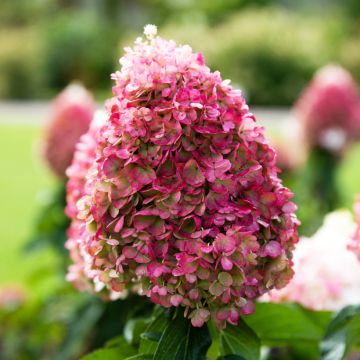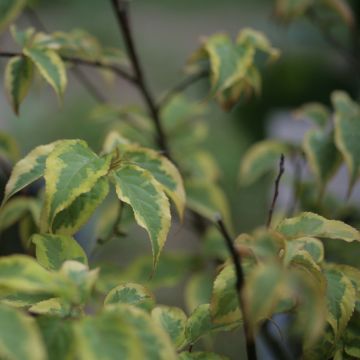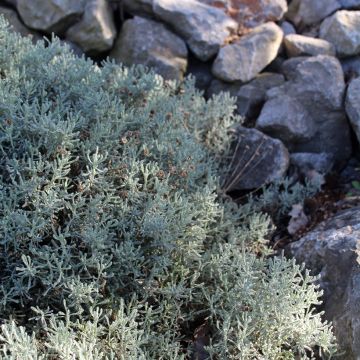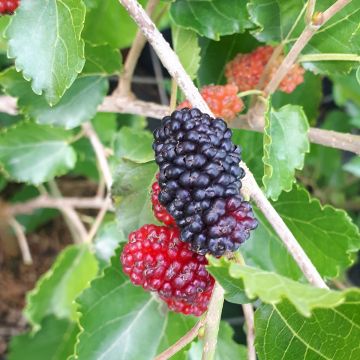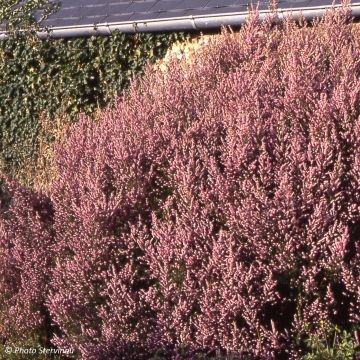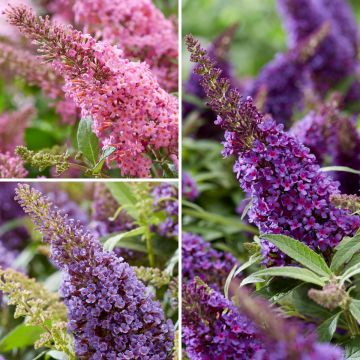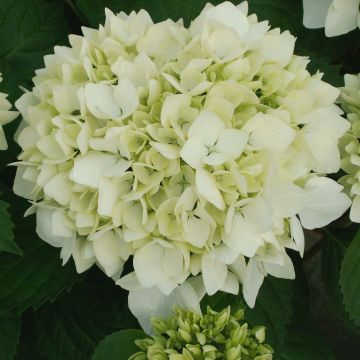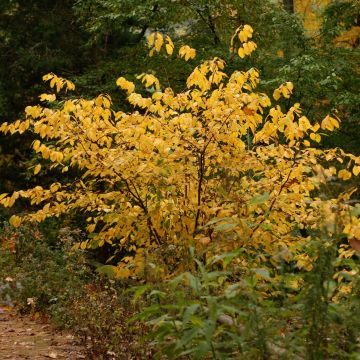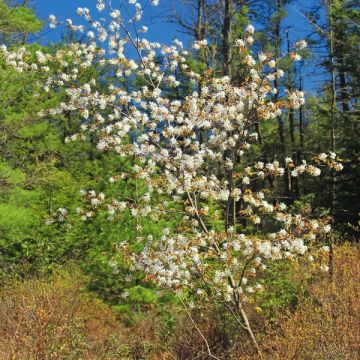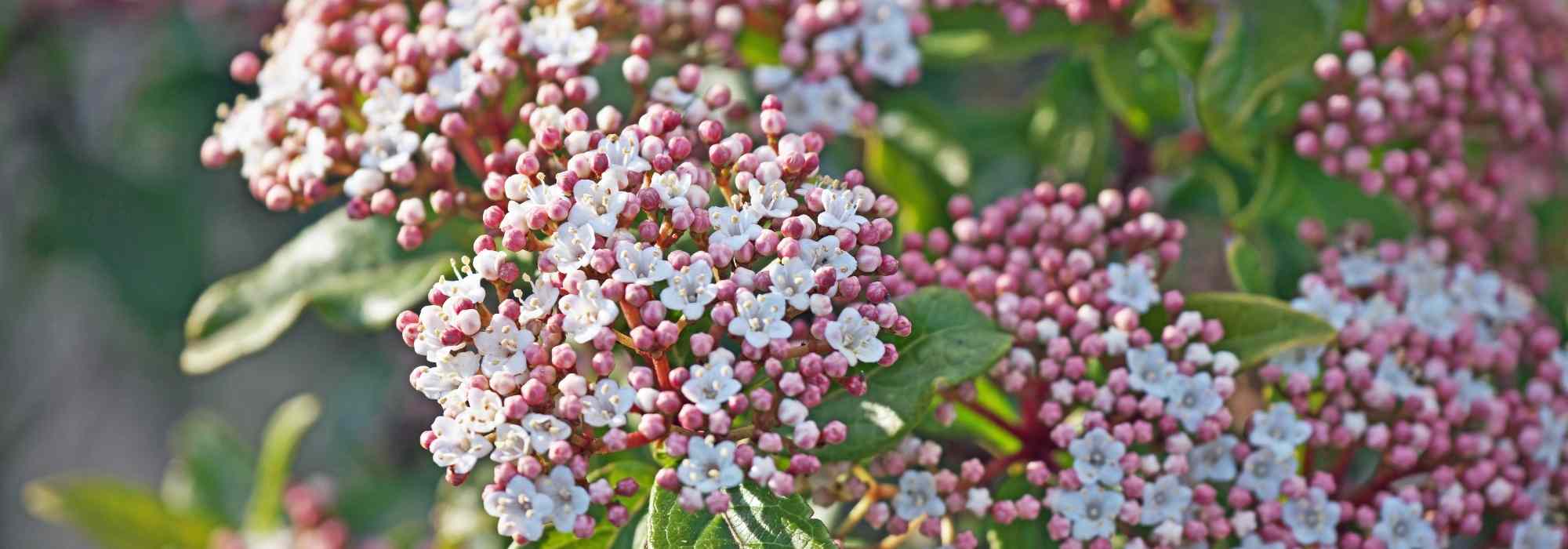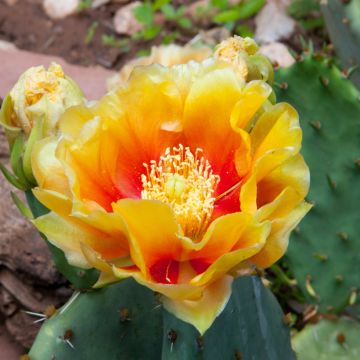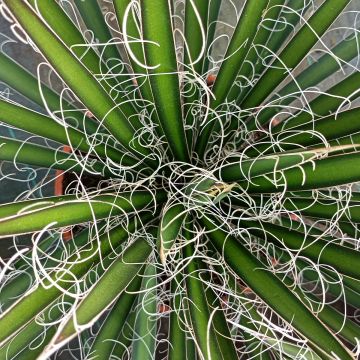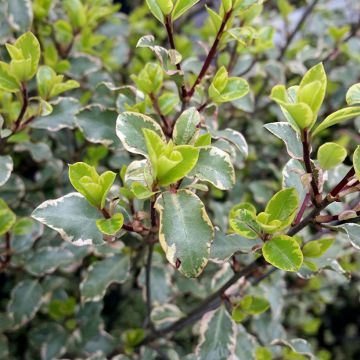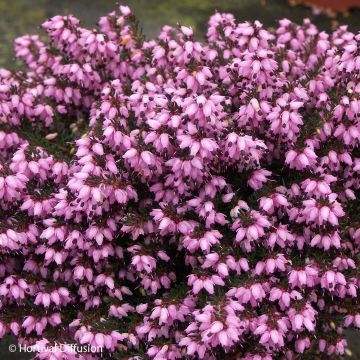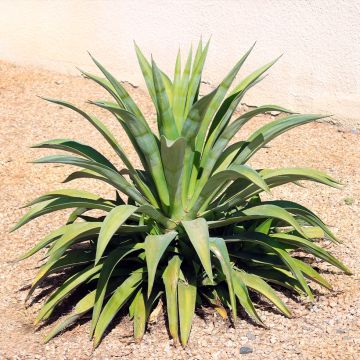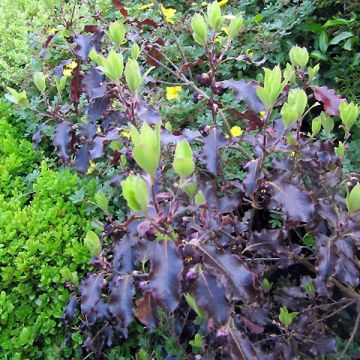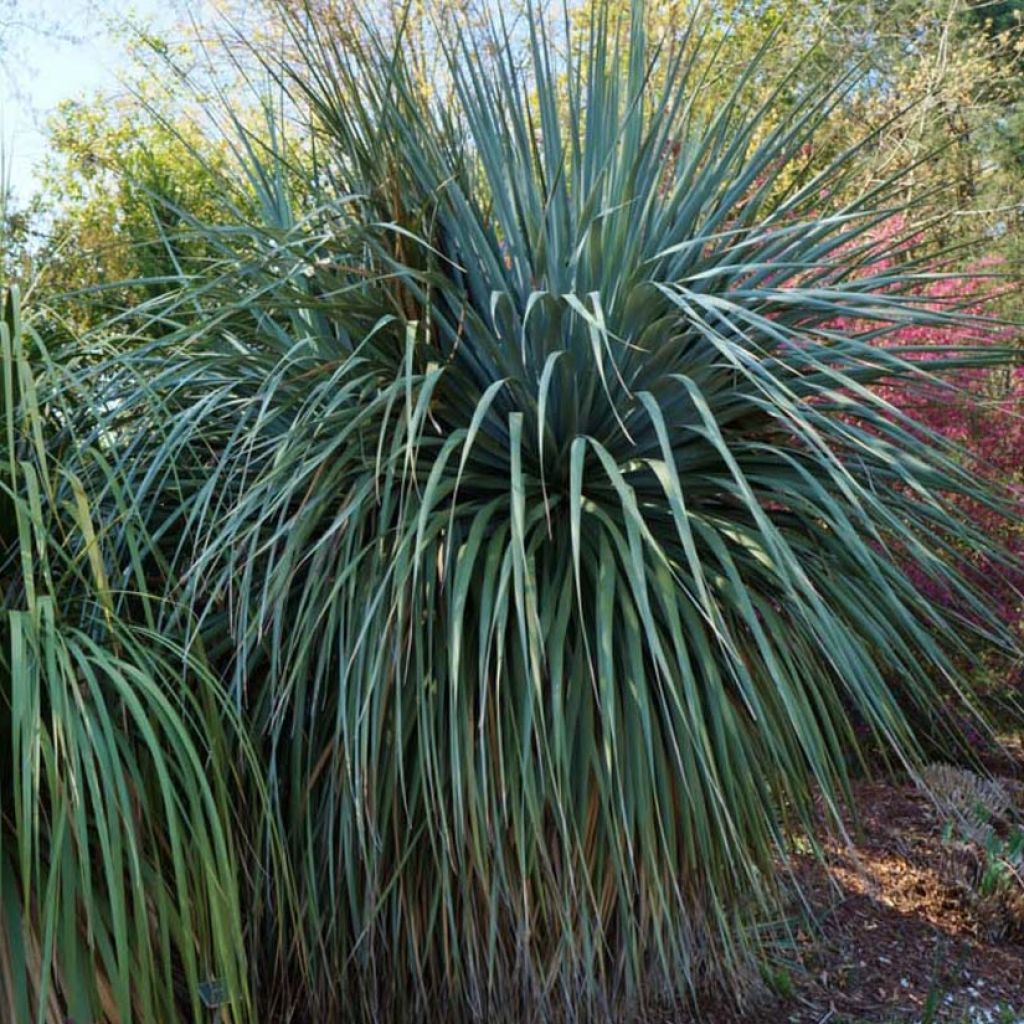

Nolina nelsonii - Noline bleue
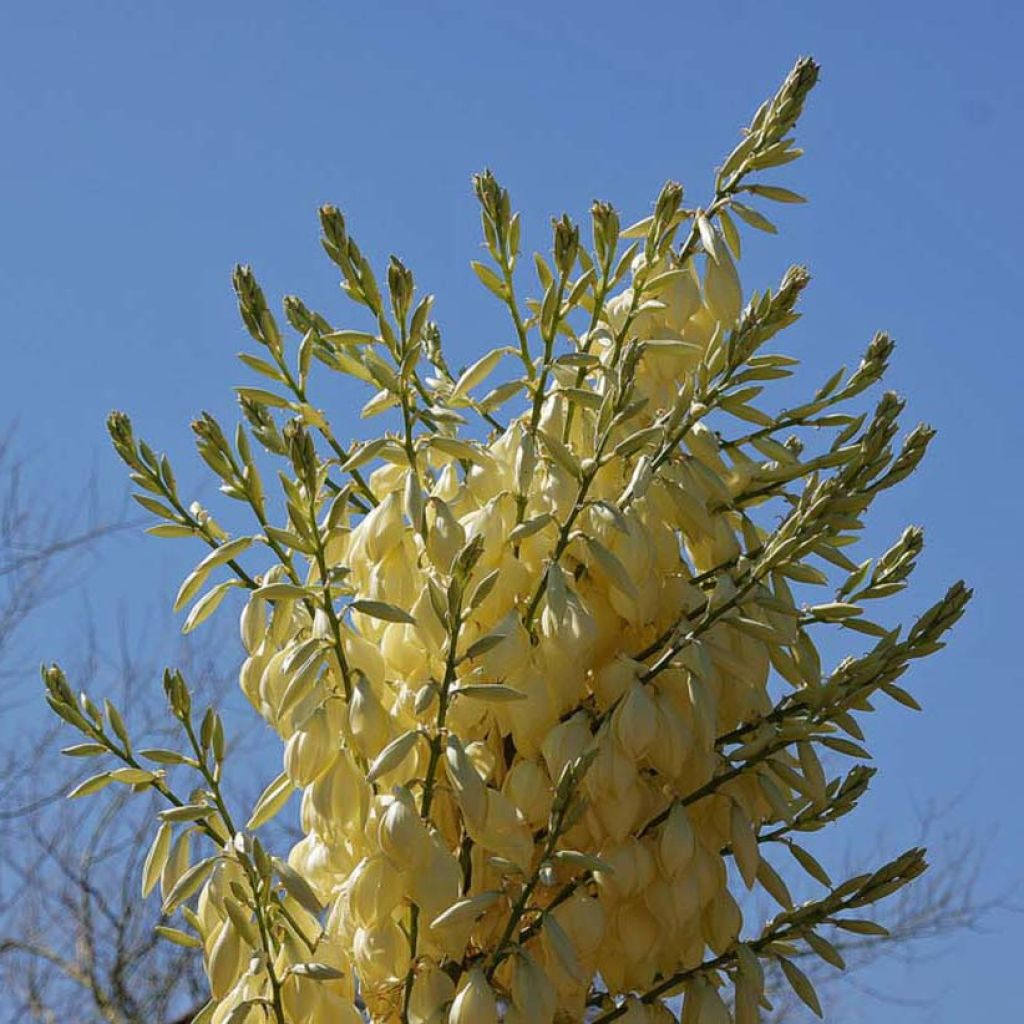

Nolina nelsonii - Noline bleue
Nolina nelsonii
Nolina nelsonii
Nelson's bear grass, Blue Beargrass Tree
Beautiful young plant identical to the photo.
Sebastien, 29/05/2020
Special offer!
Receive a €20 voucher for any order over €90 (excluding delivery costs, credit notes, and plastic-free options)!
1- Add your favorite plants to your cart.
2- Once you have reached €90, confirm your order (you can even choose the delivery date!).
3- As soon as your order is shipped, you will receive an email containing your voucher code, valid for 3 months (90 days).
Your voucher is unique and can only be used once, for any order with a minimum value of €20, excluding delivery costs.
Can be combined with other current offers, non-divisible and non-refundable.
Home or relay delivery (depending on size and destination)
Schedule delivery date,
and select date in basket
This plant carries a 24 months recovery warranty
More information
We guarantee the quality of our plants for a full growing cycle, and will replace at our expense any plant that fails to recover under normal climatic and planting conditions.

Would this plant suit my garden?
Set up your Plantfit profile →
Description
The Nolina nelsonii is a Mexican botanical species with remarkable graphics and astonishing hardiness in arid conditions. This evergreen shrub plant in dry terrains forms a beautifully gray-blue sphere, composed of long, straight, pointed, shiny leaves, carried by a short trunk. This nolina, which flowers in a large panicle of pale yellow flowers, will seduce lovers of exotic and hardy plants. A very beautiful plant for a dry garden, a gravel garden, or a dry rockery, it also grows very well in a pot in cold regions.
The Nolina nelsonii, also called Blue Nolina, is a plant of the agavaceae family, native to desert and mountainous regions of northern Mexico. This plant presents itself in its young age as a simple tuft of straight leaves, then develops a trunk that can reach several meters high in its natural environment. This plant can reach about 1m (3ft) in all directions for the foliage, and up to 3m (10ft) in flowers. Its leaves, 50 to 70cm (20 to 28in) long, linear, narrow and rigid, have finely toothed edges. They are gathered in a dense rosette at the top of the trunk, a rosette that can count up to several hundred leaves. Their color is a pale green strongly tinted with blue and gray. When the plant is mature, it produces a very tall, feathery, branched inflorescence, counting hundreds of small yellow-cream flowers. This flowering takes place in spring, and gives way to the formation of 8cm (3in) long capsule-shaped fruits. They contain oval seeds of light brown color, measuring 2-3mm (1in) in diameter. After flowering, the rosette dies and the plant develops lateral trunks.
The Nolina nelsonii seems even hardier and easier to perpetuate when planted in poor, rocky soil, or composed of a good portion of gravel that allows perfect drainage of moisture. Some sources estimate that the plant is able to survive fairly severe frosts, around -12°C (10.4°F), if they are of short duration and the plant is established in suitable soil. Naturally, it will find its place in a large rockery, on a difficult slope, in full sun, or even in arid conditions. This plant is ideal for brilliantly structuring the center of an exotic bed. In warm regions, it can be planted alone or combined with Puya caerulea, Agave americana, Cylindropuntia imbricata, Joshua Tree (Yucca brevifolia), giant fennel, fairly hardy cactus candles (Cleistocactus strausii), Aloe aristata, and equally undemanding viperines from the Canary Islands. It can also be installed in a very large pot on the terrace, or next to a swimming pool, carefully choosing a sheltered spot in full sun.
Report an error about the product description
Nolina nelsonii in pictures
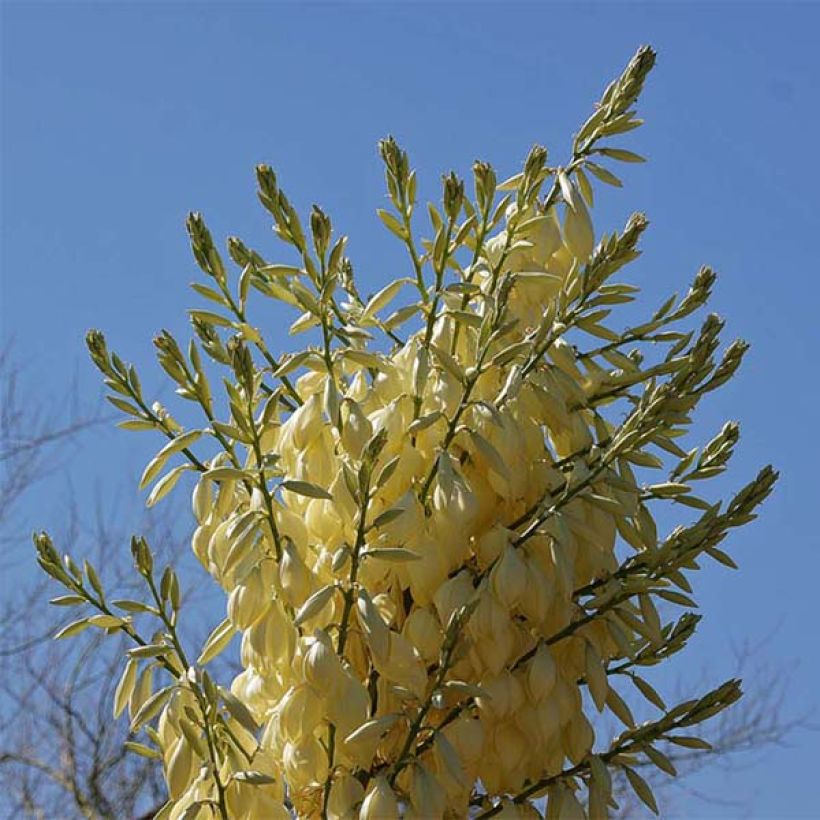



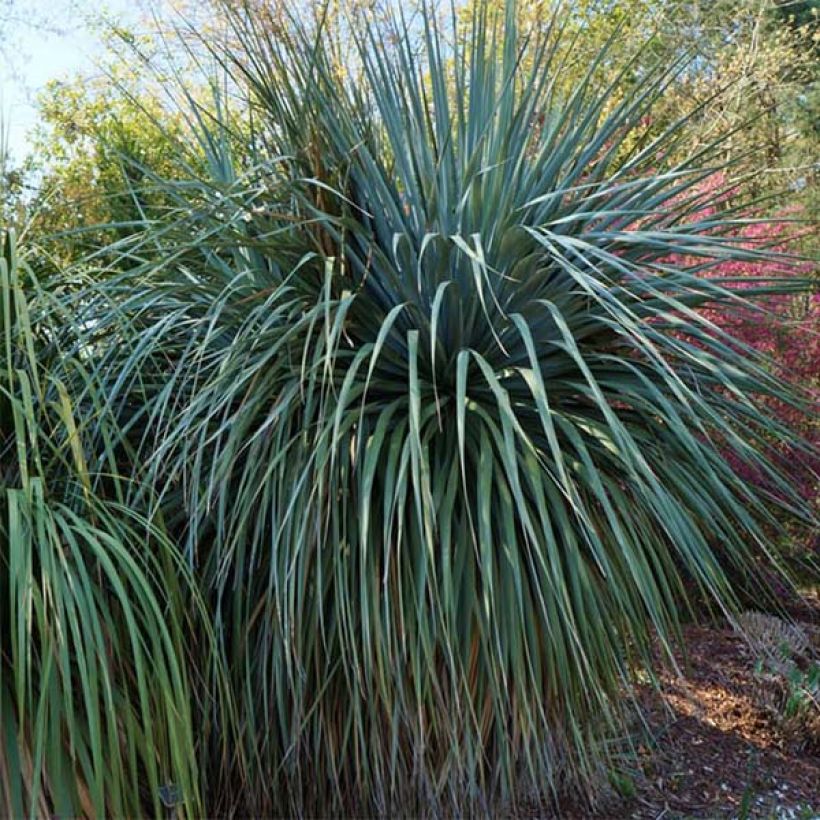

Plant habit
Flowering
Foliage
Botanical data
Nolina
nelsonii
Agavaceae
Nelson's bear grass, Blue Beargrass Tree
North America
Other Shrubs A to Z
View all →Planting and care
Install the Nolina nelsonii in full sun, in a preferably poor, rocky, stony, sandy, well-drained soil; It fears winter moisture combined with cold, which can cause the roots to rot, and tolerates perfectly dry soils in summer. It is, however, indifferent to the soil pH, which can be slightly acidic, neutral or even alkaline. It will withstand occasional frosts, down to about -12°C (10.4°F), once well established. However, we advise you to protect young plants from severe frosts for the first 2 or 3 years. Once well established, this plant requires no watering in summer, even in Mediterranean climates and arid conditions. As the plant reaches a large size, it should be grown in very large pots, preferably terracotta or wooden containers. It should be stored indoors or in a cold greenhouse during winter, protected from severe frosts, in the colder regions.
Planting period
Intended location
Care
Planting & care advice
-
, onOrder confirmed
Reply from on Promesse de fleurs
Similar products
Haven't found what you were looking for?
Hardiness is the lowest winter temperature a plant can endure without suffering serious damage or even dying. However, hardiness is affected by location (a sheltered area, such as a patio), protection (winter cover) and soil type (hardiness is improved by well-drained soil).

Photo Sharing Terms & Conditions
In order to encourage gardeners to interact and share their experiences, Promesse de fleurs offers various media enabling content to be uploaded onto its Site - in particular via the ‘Photo sharing’ module.
The User agrees to refrain from:
- Posting any content that is illegal, prejudicial, insulting, racist, inciteful to hatred, revisionist, contrary to public decency, that infringes on privacy or on the privacy rights of third parties, in particular the publicity rights of persons and goods, intellectual property rights, or the right to privacy.
- Submitting content on behalf of a third party;
- Impersonate the identity of a third party and/or publish any personal information about a third party;
In general, the User undertakes to refrain from any unethical behaviour.
All Content (in particular text, comments, files, images, photos, videos, creative works, etc.), which may be subject to property or intellectual property rights, image or other private rights, shall remain the property of the User, subject to the limited rights granted by the terms of the licence granted by Promesse de fleurs as stated below. Users are at liberty to publish or not to publish such Content on the Site, notably via the ‘Photo Sharing’ facility, and accept that this Content shall be made public and freely accessible, notably on the Internet.
Users further acknowledge, undertake to have ,and guarantee that they hold all necessary rights and permissions to publish such material on the Site, in particular with regard to the legislation in force pertaining to any privacy, property, intellectual property, image, or contractual rights, or rights of any other nature. By publishing such Content on the Site, Users acknowledge accepting full liability as publishers of the Content within the meaning of the law, and grant Promesse de fleurs, free of charge, an inclusive, worldwide licence for the said Content for the entire duration of its publication, including all reproduction, representation, up/downloading, displaying, performing, transmission, and storage rights.
Users also grant permission for their name to be linked to the Content and accept that this link may not always be made available.
By engaging in posting material, Users consent to their Content becoming automatically accessible on the Internet, in particular on other sites and/or blogs and/or web pages of the Promesse de fleurs site, including in particular social pages and the Promesse de fleurs catalogue.
Users may secure the removal of entrusted content free of charge by issuing a simple request via our contact form.
The flowering period indicated on our website applies to countries and regions located in USDA zone 8 (France, the United Kingdom, Ireland, the Netherlands, etc.)
It will vary according to where you live:
- In zones 9 to 10 (Italy, Spain, Greece, etc.), flowering will occur about 2 to 4 weeks earlier.
- In zones 6 to 7 (Germany, Poland, Slovenia, and lower mountainous regions), flowering will be delayed by 2 to 3 weeks.
- In zone 5 (Central Europe, Scandinavia), blooming will be delayed by 3 to 5 weeks.
In temperate climates, pruning of spring-flowering shrubs (forsythia, spireas, etc.) should be done just after flowering.
Pruning of summer-flowering shrubs (Indian Lilac, Perovskia, etc.) can be done in winter or spring.
In cold regions as well as with frost-sensitive plants, avoid pruning too early when severe frosts may still occur.
The planting period indicated on our website applies to countries and regions located in USDA zone 8 (France, United Kingdom, Ireland, Netherlands).
It will vary according to where you live:
- In Mediterranean zones (Marseille, Madrid, Milan, etc.), autumn and winter are the best planting periods.
- In continental zones (Strasbourg, Munich, Vienna, etc.), delay planting by 2 to 3 weeks in spring and bring it forward by 2 to 4 weeks in autumn.
- In mountainous regions (the Alps, Pyrenees, Carpathians, etc.), it is best to plant in late spring (May-June) or late summer (August-September).
The harvesting period indicated on our website applies to countries and regions in USDA zone 8 (France, England, Ireland, the Netherlands).
In colder areas (Scandinavia, Poland, Austria...) fruit and vegetable harvests are likely to be delayed by 3-4 weeks.
In warmer areas (Italy, Spain, Greece, etc.), harvesting will probably take place earlier, depending on weather conditions.
The sowing periods indicated on our website apply to countries and regions within USDA Zone 8 (France, UK, Ireland, Netherlands).
In colder areas (Scandinavia, Poland, Austria...), delay any outdoor sowing by 3-4 weeks, or sow under glass.
In warmer climes (Italy, Spain, Greece, etc.), bring outdoor sowing forward by a few weeks.






























